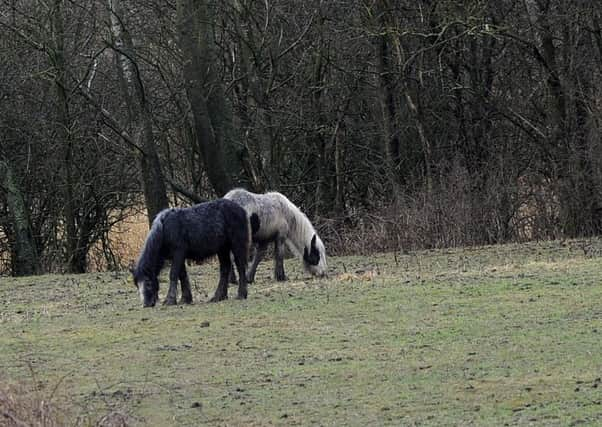Be aware of the risk factors for laminitis


Even though it has been recognised for a long period of time, we still do not fully understand this condition.
Laminitis is an inflammation of the lamina that is responsible for the attachment of the coffin bone to the hoof. When this bond is destroyed, the bone will become displaced and can even prolapse through the hoof sole.
There are several causes of laminitis:–
• pasture associated laminitis
Advertisement
Hide AdAdvertisement
Hide Ad• toxaemia/sepsis due to underlying disease, for example retained placenta
• supporting limb laminitis
• corticosteroid therapy
• endocrinopathies.
In this article we will focus on the first cause as it is the most common type of laminitis encountered in the UK.
With proper knowledge it can, in many cases, be prevented.
Every horse owner should be aware that ingestion of lush pasture can trigger laminitis.
The grass, especially in spring time, has a high level of sugars called fructans that have been proven to be directly connected with the pathophysiology of this disease.
Advertisement
Hide AdAdvertisement
Hide AdGrass that is stressed by overnight frost or overgazing will contain high levels of fructans.
Many horses and ponies are liveried on pastures that were used for cattle. These have usually been fertilised with grass species that are not appropriate for horses.
Also poor pastures should be avoided.
The most prone to laminitis will be horses that suffer from underlying endocrinopathies – Cushing’s disease and Equine Metabolic Syndrome.
Every horse that suffers from laminitis should be tested for those.
Advertisement
Hide AdAdvertisement
Hide AdIt is also a good indicator of how important is to keep your horse in good weight.
Obesity that accompanies these endocrinological abnormalities is a major risk factor for developing laminitis.
If your horse is overweight you should contact your vet, or an equine nutritionist, to make a plan for weight loss.
Restricting grazing time has been proven ineffective as once horses realise that they are spending less time on the pasture, they will actually graze more.
Advertisement
Hide AdAdvertisement
Hide AdIf you don’t have access to sandy turn-out a grazing muzzle could be the best solution.
Clinical signs of laminitis include:–
• pottery gait
• hot hooves
• elevated digital pulses in affected limbs
• reluctance to move
• shifting weight from left to right
• laminitic posture, with the horse standing with forelimbs placed far forward
Every case of laminitis should be treated as an emergency so contact your vet as soon as possible.
The treatment might include oral medication, radiographs, dietary management, therapeutic farriery and sometimes surgery.
Advertisement
Hide AdAdvertisement
Hide AdA horse with laminitis should be put in a stall with very deep bedding, ideally 18ins deep, and allowed to rest for a couple of weeks.
Unfortunately, not all cases can be treated successfully and that is why it is crucial to do everything to eliminate the risk factors from your horse’s life.
• Robson and Prescott has eight branches, with its main hospital at Whorral Bank, Morpeth. Branch surgeries are at Alnwick, Ashington, Bedlington, Blyth, Seaton Delaval, West Moor, Kirkley Hall and Morpeth.
The practice employs more than 70 staff, including 18 veterinary surgeons, 13 qualified veterinary nurses, six trainee nurses, six nursing auxiliaries and a hydrotherapist.
The Whorral Bank Hospital is staffed 24 hours a day and allows the practice to provide round the clock emergency care.